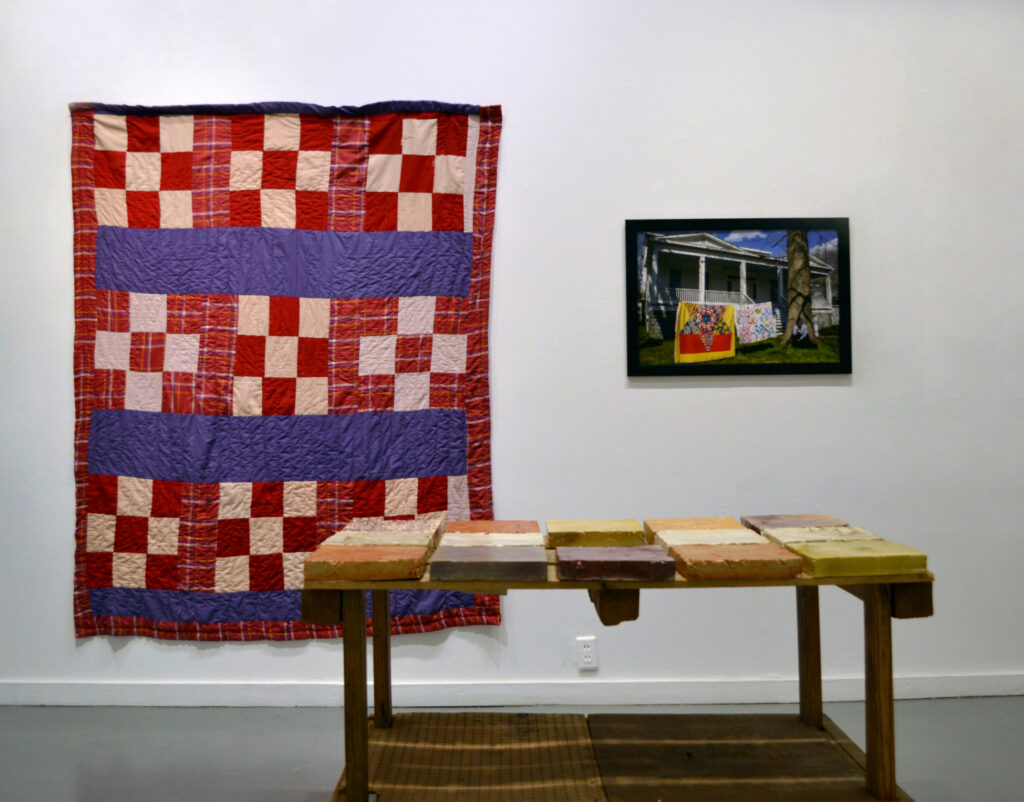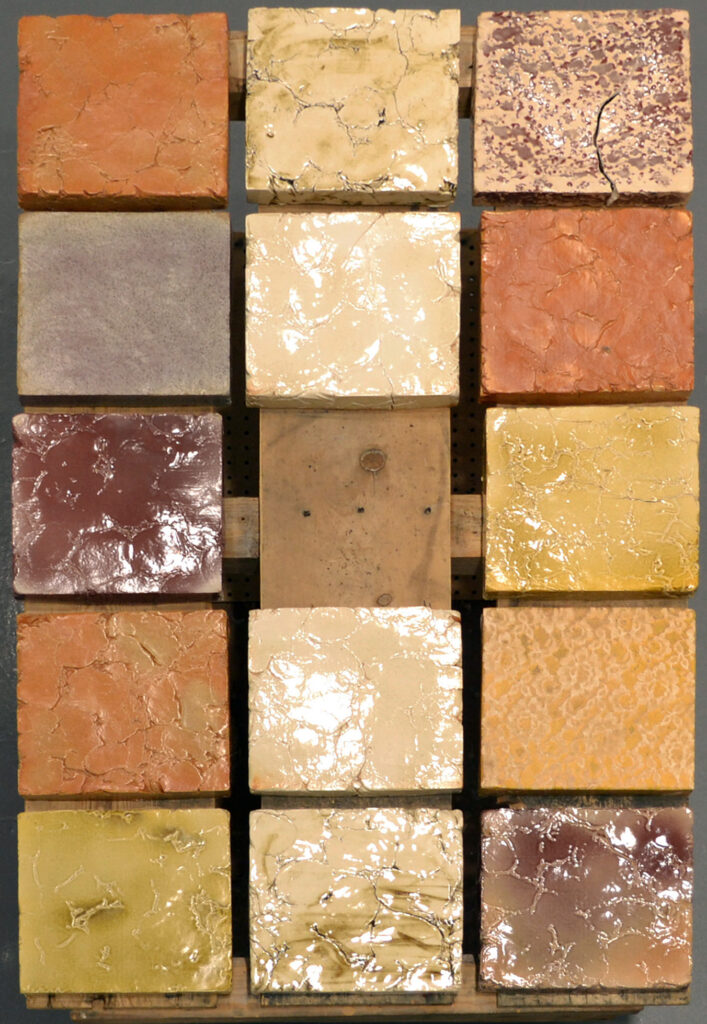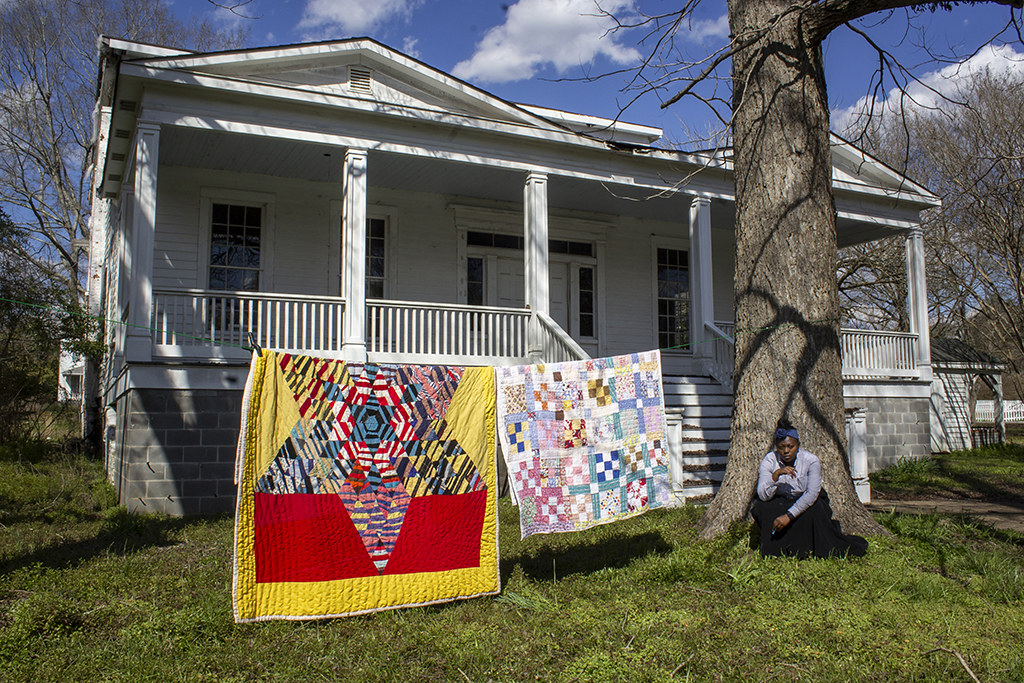Just Injust, 2021
Craft is often debated on whether it should be held to the same standards as fine arts. What I realized through this body of work, is that for my family, crafting was mostly all they had access to. Since most of the women in my family were not able to take on opportunities women like me have today, such as further their education, they had to find other ways of expressing themselves, their experiences, and their love.
Quilting was commonly considered to be a family heirloom and tradition. In a 2016 article. Jeania Ree Moore[1] argues how “quilting was not only a symbol for creative practices, but also unearthed aesthetics as vital to being human by engaging historical, literary, and personal narrative,” Moore also argued how “quilting reflected both how black women have been unseen, exploited, dated, and legitimated as fully human, and how black women have expressed, inhabited, celebrated, and lived their humanity regardless.” My ceramics piece, Reunion, was inspired by my family’s history with quilting. Women in my family on both my mom’s and dad’s side were taught sewing, stitching, and quilting when they were children, but sadly this tradition is quickly dying out within my family. At the time my great grandmother and my grandmother were learning to quilt, that was something that was expected of them along with other household chores and responsibilities. I, on the other hand, had the privilege of going to school and furthering my education, participating in sports and other extracurricular activities. However, since I became occupied exploring my opportunities, I missed out on this family tradition. At the time, I was not aware of how important quilting was in my family until my grandmother, on my mom’s side, hand-stitched a quilt for each of her twelve grandchildren and her four children. The quilt she made for me was made up of mostly old clothes from her, my mom, and her siblings when they were younger. As someone who has always been the distant cousin because I did not grow up near the rest of my family, this quilt was a testament to my grandmother’s love, both currently, and the love that will remain in the future. The idea of identity and belonging is something I have been trying to figure out how to incorporate into my work for a long time. When I started including my grandmother’s quilts into this body of work, I reflected on the enslaved women having to make a variety of quilts that they and their loved ones weren’t even allowed to use for themselves. The long hand-making process and stories behind the reused material and their relationship to one another is something I may not ever truly know about, but still gave me a feeling of belonging through my family’s conveyed narratives through quilting. What I found to be the most important components of the quilt-making process was the hand-making, time, and in some ways, the unknown that went into making a quilt.
Since I miss out on this family tradition, I never learned to quilt myself. In ceramics, I was able to create pieces about the quilt making process by press molding tiles. Each tile has something unique about them and none are exactly alike. Some tiles have a smooth top, while others are rough, jagged, and cracked; nor do any of the tiles fit perfectly together. This idea of embracing imperfections and the unknown of the kiln and glazing process was encouraged after researching and meeting some of the women of the Gee’s Bend quilters. A quote from Mensie Lee Pettway, who was also a member of the Freedom Quilting Bee, stated “We was taught there’s so many different ways to build a quilt. It’s like building a house. You can start with a bedroom over there, or a den over here, and just add on until you get what you want. Ought not two quilts ever be the same. You might use the same material, but you would do it differently. A lot of people make quilts just for your bed to keep you warm. But a quilt is more. It represents safekeeping, it represents beauty, and you could say it represents family history.”[1] Although my piece is made with clay and nonfunctional, I felt this piece was my version of what it means to have safekeeping and representing my history while understanding that I will never fully have all the answers regarding my ancestors; however, this is what I know and this is what I have. The ceramic pieces were an acknowledgment that even though there is a lot of missing information, and we can never truly know the enslaved person’s experience, the overall pieces still manage to hold one another and support each other. Similar to what enslaved people and the Black community has been doing for centuries.
This body of work intertwines my lived experiences that I deal with as a Black woman with those of American history. I am interested in the ways in which this fragment and incomplete history have been forced upon me and how the past and present are intertwined. By focusing on the female slave’s perspective and narrative, my images tackle the conversation about the effects of survivor’s guilt while confronting a history I did not experience or witness. Throughout my research, I realized the enslaved experience was an involuntary sacrifice but has allowed me to fulfill opportunities today, both big and small–that was never an option for slaves. I utilize self-portraiture as an attempt to build a deeper connection to understand the reality of the enslaved woman’s experience. I focus on the facade she had to maintain, the abuse she endured, and how the idea of avoidance, loss, and the separation of family and community is still an issue in the present. By combining staged photographs and vernacular from family photo albums, I began to observe and understand how images inform the creation of my identity. This work intends to bring attention to the relationship between oppression and suppression by conveying notions of power dynamics, identity, and Black womanhood.
[1] Moore, Jeania Ree V. “African American Quilting and the Art of Being Human: Theological Aesthetics and Womanist Theological Anthropology.” The Anglican Theological Review , vol. 98.3, 2016, pp. 457-478.


